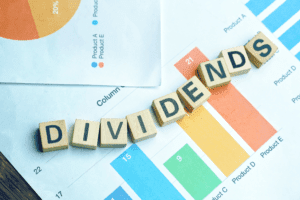
A contingency is an existing condition liabilities accounts list or situation that’s uncertain as to whether it’ll happen or not. An example is the possibility of paying damages as a result of an unfavorable court case. The condition is whether the entity will receive a favorable court judgment while the uncertainty pertains to the amount of damages to be paid if the entity receives an unfavorable court judgment.
- Examples of assets include your accounts receivable, loan receivables and physical assets like vehicles, property, and equipment.
- As a small business owner, you need to properly account for assets and liabilities.
- Liabilities can further be classified into several distinct types.
- If both sides of this basic accounting equation are the same, then your book’s “balance” is correct.
- Non-current liabilities are due in more than one year and most often include debt repayments and deferred payments.
- It compares your total liabilities to your total assets to tell you how leveraged—or, how burdened by debt—your business is.
FAQs on Chart of Accounts
Current liabilities are due within a year and are often paid using current assets. Non-current liabilities are due in more than one year and most often include debt repayments and deferred payments. AT&T clearly defines its bank debt that’s maturing in less than one year under current liabilities. This is often used as operating capital for day-to-day operations by a company of this size rather than funding larger items which would be better suited using long-term debt. Liability generally refers to the state of being responsible for something.

Examples of liabilities
You can take out loans to help expand your small business. A loan is considered a liability https://www.facebook.com/BooksTimeInc/ until you pay back the money you borrow to a bank or person. Understanding what liabilities are in accounting, as well as the most common examples of each type, can help you track and identify them in your balance sheet.
Type 5: Accrued expenses
- See how Annie’s total assets equal the sum of her liabilities and equity?
- Yes, it is a good idea to customize your chart of accounts to suit your unique business.
- But not all liabilities are expenses—liabilities like bank loans and mortgages can finance asset purchases, which are not business expenses.
- From the above balance sheet evaluation, we can say that Havells India has a good financial position and enough assets to pay current and long-term liability.
- It can appear like spending and liabilities are the same thing, but they’re not.
- Most companies will have these two-line items on their balance sheets because they’re part of ongoing current and long-term operations.
Some businesses also include capital and financial statement categories. Non-current liabilities can also be referred to as long-term liabilities. They’re any https://www.bookstime.com/ debts or obligations that your business has incurred that are due in over a year. Businesses will take on long-term debt to acquire new capital to purchase capital assets or invest in new capital projects. However, an expense can create a liability if the expense is not immediately paid. For instance, when you receive a utility bill, you must record the utility expense.
- Your COA is a useful document that lets you present all the financial information about your business in one place, giving you a clear picture of your company’s financial health.
- An added bonus of having a properly organized chart of accounts is that it simplifies tax season.
- A few examples of general ledger liability accounts include Accounts Payable, Short-term Loans Payable, Accrued Liabilities, Deferred Revenues, Bonds Payable, and many more.
- The outstanding money that the restaurant owes to its wine supplier is considered a liability.
- Most contingent liabilities are uncommon for small businesses, but here are some that you might encounter.
- Both short-term and long-term liabilities include several types of liabilities which you will need to become familiar with in order to record them properly.
What Are Liabilities in Accounting? (With Examples)

The term can refer to any money or service owed to another party. Tax liability can refer to the property taxes that a homeowner owes to the municipal government or the income tax they owe to the federal government. A retailer has a sales tax liability on their books when they collect sales tax from a customer until they remit those funds to the county, city, or state.
